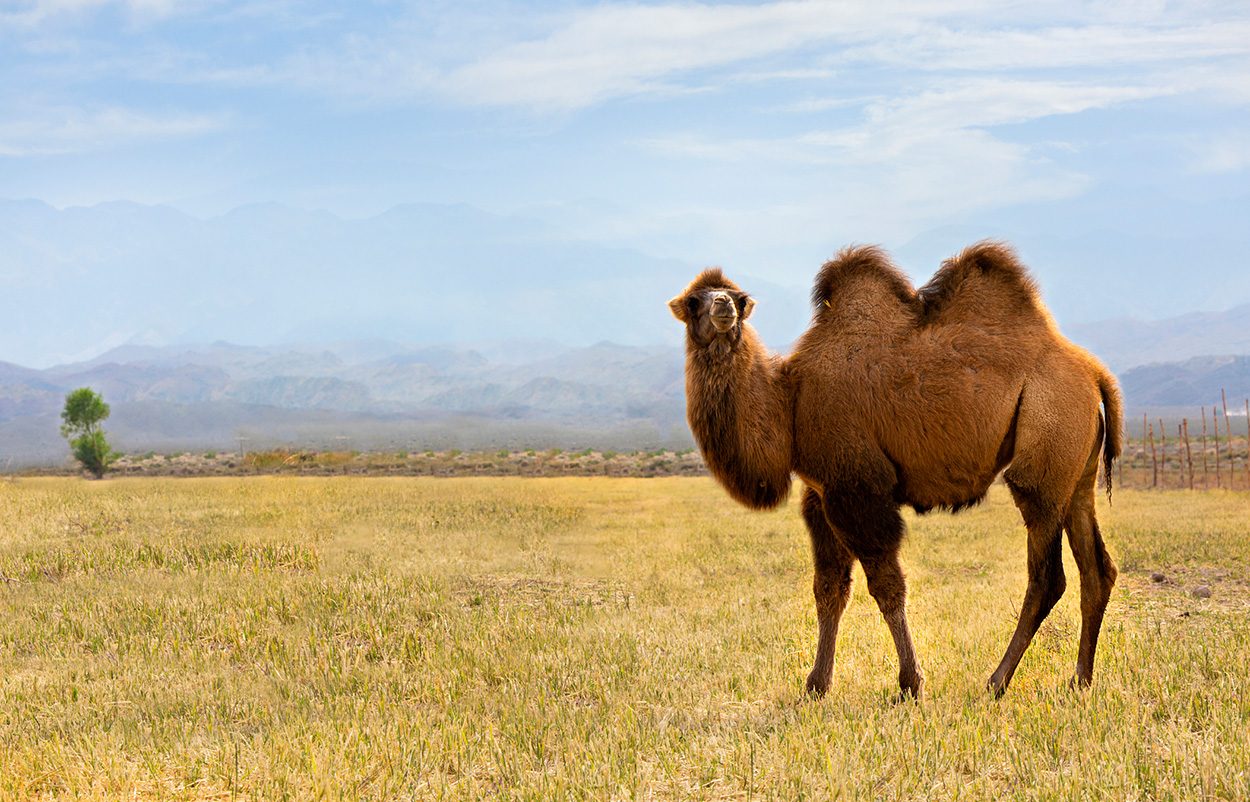Much of Central Asia is characterized by steppes and deserts – and they are also changing in the context of climate change, the researchers identified. Accordingly, the northern border of the desert climate has shifted north by about 100 km since the eighties, and the adjacent steppes have spread northward by about the same amount. At the same time, precipitation falls more frequently than in the higher elevations of the mountains due to warming. As a result, the snow cover disappears in the high mountains and the lower regions hardly receive any melt water – this also exacerbates the growing shortage of water in Central Asia.
More than 70 million people live in Central Asia – a vast, mostly steppe region in the heart of Eurasia. This region was once home to nomads, and today it is divided between the countries of Kazakhstan, Kyrgyzstan, Tajikistan, Turkmenistan and Uzbekistan, as well as China. But the cold temperate steppes and deserts still dominate 60 percent of this area. This makes Central Asia, which is already dry, particularly vulnerable to fluctuations in rainfall or periods of drought. “Even small deviations from average or expected rainfall during the growing season can be devastating to the agricultural and social stability of this region,” explains lead author Qi Hu of the University of Nebraska-Lincoln. So this place is very vulnerable to climate change.”
Plains and deserts moved 100 km to the north
In order to determine if and how the climate in Central Asia had actually changed, he and his team evaluated weather data from the 1960s onward about temperatures and precipitation in Central Asia. Its focus was on the location and extent of climatic zones as defined by the Köppen and Geiger system. “Because warm season precipitation changed dramatically in the 1980s, we split the time series in two and focused on the differences between 1960-1980 and 1990-2020,” the scientists explain. Comparisons initially confirmed that average annual temperatures in all eleven climate types occurring in Central Asia had increased – by an average of 0.6 to 1.7 degrees. At the same time, precipitation has decreased in most regions.
“The most notable change since the 1980s is the northward expansion of the desert climate,” the researchers said. The team identified “these changes can be seen along the temperate latitudes of northern Uzbekistan, Kyrgyzstan and southern Kazakhstan, as well as along the northern and eastern edges of the Jonggar Basin in western China.” This spread of the desert climate was accompanied by a significant rise in temperatures and a decrease in precipitation, especially in the summer. At the same time, the area of \u200b\u200bthe steppe climate bordering the north progressed approximately the same amount to the north in the zone of cold temperate continental climate. Among other things, the north of China’s Xinjiang region has become a steppe or desert in many places.
More rain in the mountains
However, it did not become drier everywhere in Central Asia: the team found that there was a small increase in precipitation at higher altitudes in the mountains. As a result, the climatic zone of the cold-summer continental climate has expanded slightly to the south. However, this is also less positive than it appears at first. Because this results in a gradient of precipitation and a compressed temperature in a smaller space – the change from a warm dry steppe climate to a cool, humid one occurs over a relatively short distance. This, in turn, affects the distribution of air pressure and strengthens the westerly winds in this transition zone. This results in increased dry air flow and reduced rain drag. “The possible consequence may be that the steep gradient leads to positive feedback that accelerates the northward spread of the dry climate,” he and colleagues explain.
Another problem: precipitation in the higher elevations of the mountains is now falling more and more in the form of rain rather than snow due to warming. As a result, the snow cover in the mountains decreases, and as a result, melt water from springs, which is often an important water resource for areas located at the foot of the mountains and in the plains, also decreases. “If this continues for another 20 or 30 years, the glaciers and mountain snows may completely disappear,” Hu Jintao says. “Then all that remains is the scattered summer rain, which will not be enough to keep lake water levels and soil moisture high enough during the growing season.” For those who live in the vast steppe regions of Central Asia, these climate changes mean a twofold decrease in their water resources consideration: it rains less, and at the same time, meltwater-fed rivers carry less water in spring – exactly when plants are in urgently needed.
Source: Qi Hu (University of Nebraska-Lincoln) et al., Geophysical Research Letters, doi: 10.1029/2022GL098895

“Alcohol buff. Troublemaker. Introvert. Student. Social media lover. Web ninja. Bacon fan. Reader.”






More Stories
Ecologists Celebrate New Xesap National Park in Laos | Science
Is the wrong diet making you forget?
We can study it with a new telescope.